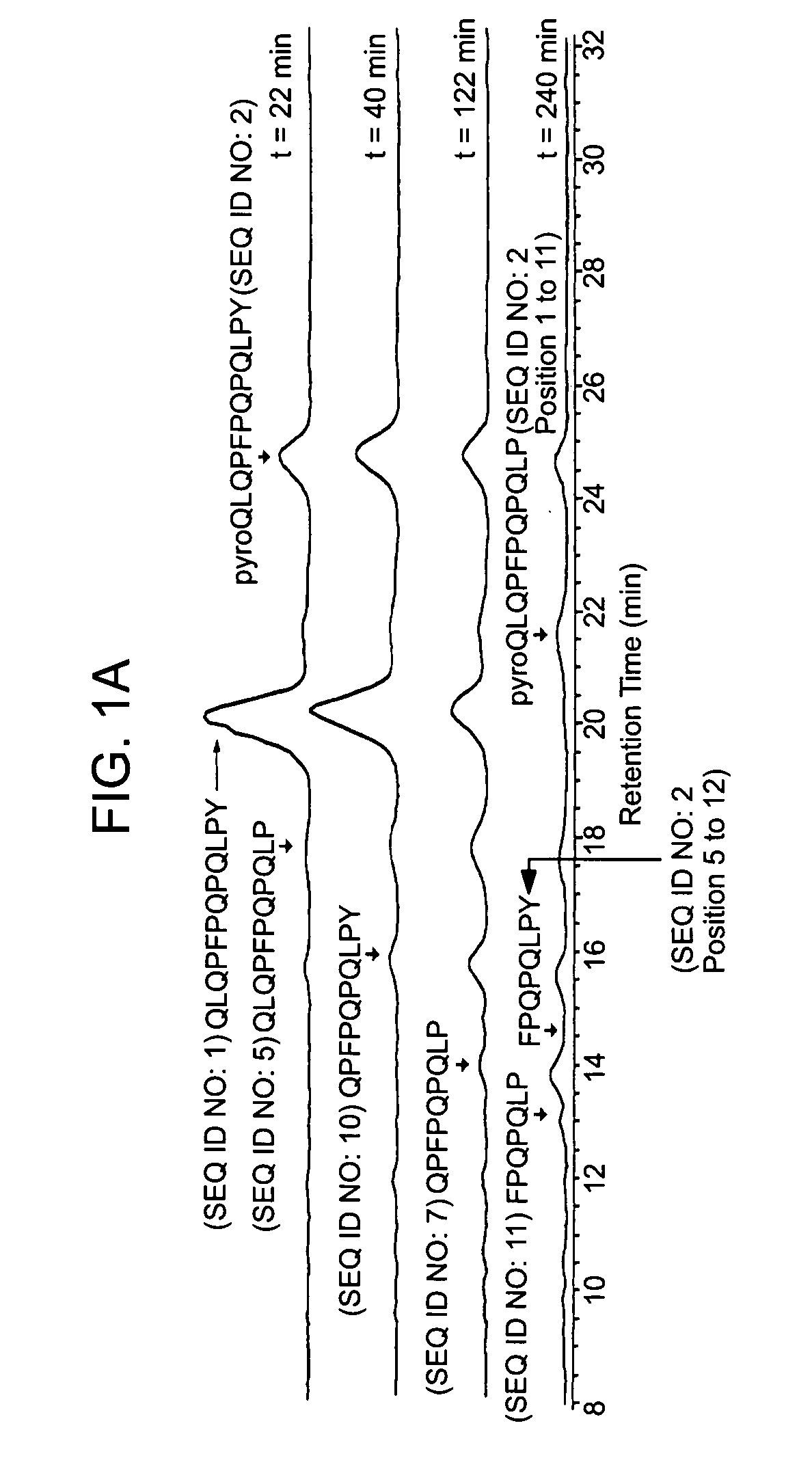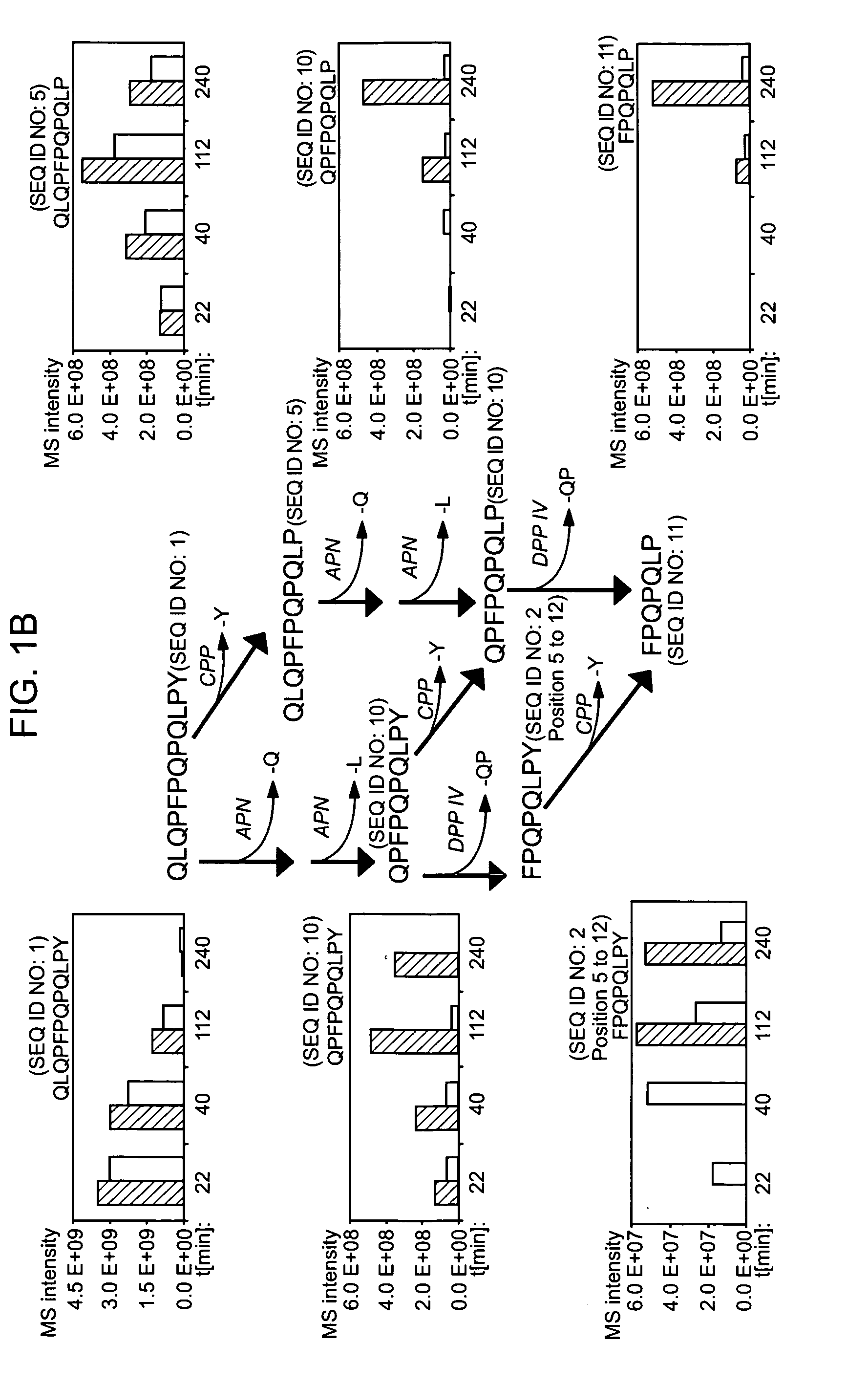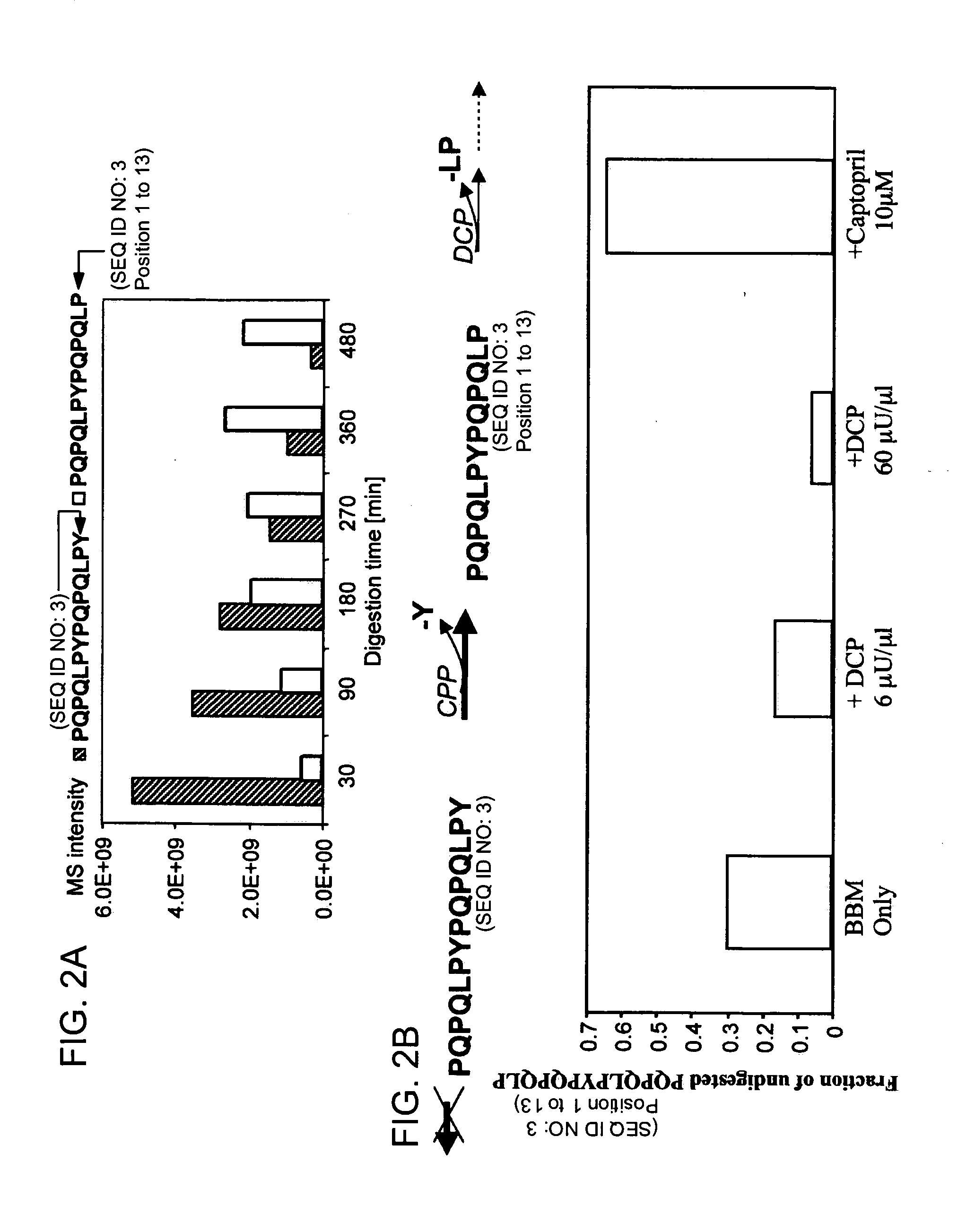Enzyme treatment of foodstuffs for Celiac Sprue
a technology for celiac sprue and enzymes, applied in the field of enzyme treatment of foodstuffs for celiac sprue, can solve the problems of no good treatment for eczema, few patients respond poorly or not at all, and achieve the effect of reducing the levels of toxic gluten oligopeptides and preventing or relieving their toxic effects
- Summary
- Abstract
- Description
- Claims
- Application Information
AI Technical Summary
Benefits of technology
Problems solved by technology
Method used
Image
Examples
example 1
Detection of Immunodominant Peptides from Gliadin and Enzymes that Degrade Them
[0117] The following examples describe the discovery and characterization of a small number of immunodominant peptides from gliadin, which account for most of the stimulatory activity of dietary gluten on intestinal and peripheral T lymphocytes found in Celiac Sprue patients. The proteolytic kinetics of these immunodominant peptides were analyzed at the small intestinal surface. Brush border membrane vesicles from adult rat intestines were used to show that these proline-glutamine-rich peptides are exceptionally resistant to enzymatic processing, and that dipeptidyl peptidase IV and dipeptidyl carboxypeptidase are the rate-limiting enzymes in their digestion. Supplementation of the brush border membrane with trace quantities of a bacterial prolyl endopeptidase leads to rapid destruction of these gliadin peptides. These results provide the basis for enzyme-mediated therapies for treating food for provisio...
example 2
Further Characterization of Immunodominant Gliadin Peptides and Means for their Digestion
[0133] It has long been known that the principal toxic components of wheat gluten are a family of closely related Pro-Gln rich proteins called gliadins. Peptides from a short segment of α-gliadin appear to account for most of the gluten-specific recognition by CD4+ T cells from Celiac Sprue patients. These peptides are substrates of tissue transglutaminase (tTGase), the primary auto-antigen in Celiac Sprue, and the products of this enzymatic reaction bind to the class II HLA DQ2 molecule. This example describes a combination of in vitro and in vivo animal and human studies used to characterize this “immunodominant” region of α-gliadin as part of an unusually long proteolytic product generated by the digestive process that: (a) is exceptionally resistant to further breakdown by gastric, pancreatic and intestinal brush border proteases; (b) is the highest specificity substrate of human tissue tra...
example 3
Comparison of PEP Activities
[0150] To gain insight into the similarities and differences between naturally occurring prolyl endopeptidases, we have systematically compared the properties of three homologous PEPs from different bacterial sources. Our studies have utilized two known recombinant PEPs from Flavobacterium meningosepticum (FM) and Sphingomonas capsulata (SC), respectively, and a novel PEP from Myxococcus xanthus (MX) that we have expressed for the first time as a heterologous recombinant protein. The enzymatic activities of these PEPs were quantitatively analyzed versus model substrates as well as two gluten-derived peptides with potential relevance to Celiac Sprue pathogenesis. In particular, we have probed the influence of substrate chain length, pH, pancreatic proteases and intestinal brush border peptidases on the activity of each PEP. Both in vivo and ex vivo experiments were performed as part of these studies.
Experimental Procedures
[0151] Cloning of PEP Genes.
[...
PUM
| Property | Measurement | Unit |
|---|---|---|
| pH | aaaaa | aaaaa |
| pH | aaaaa | aaaaa |
| concentration | aaaaa | aaaaa |
Abstract
Description
Claims
Application Information
 Login to View More
Login to View More - R&D
- Intellectual Property
- Life Sciences
- Materials
- Tech Scout
- Unparalleled Data Quality
- Higher Quality Content
- 60% Fewer Hallucinations
Browse by: Latest US Patents, China's latest patents, Technical Efficacy Thesaurus, Application Domain, Technology Topic, Popular Technical Reports.
© 2025 PatSnap. All rights reserved.Legal|Privacy policy|Modern Slavery Act Transparency Statement|Sitemap|About US| Contact US: help@patsnap.com



